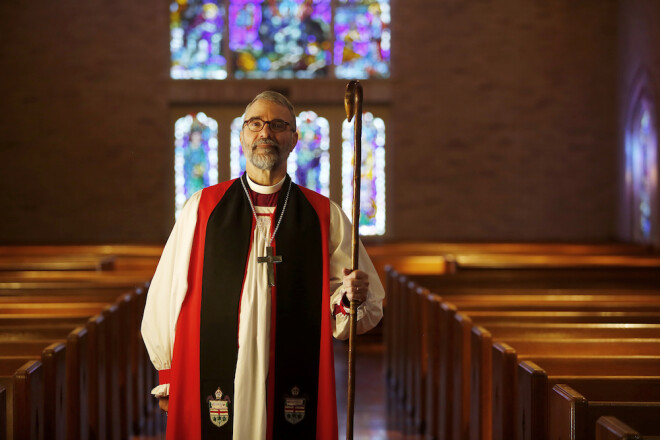Powers and Principalities

It has been a hard few weeks for our country. We have heard the sobering warning of Robert Mueller, supported by both sides of the aisle, that the Russians continue to attempt to corrupt our political system. Connected to this, and in the light of Facebook’s handling of private data, discussion of regulating such companies increases. An angry and troubled young man from Allen, reinforced in his prejudices by 8Chan, murders shoppers in El Paso. Meanwhile in a prominent magazine of opinion, writers worry about the long-term effect of social media on anxiety and depression, and of automation on the very future of human work.
The insidious factor behind all these is of course technology, about which we need to think theologically. Does our faith have anything to say about this reality, which will determine what becomes of human culture in the coming generations? First of all, we suppose that it is something apart from us which impels, mesmerizes, or oppresses us. But it is at the same time something in the power of our choosing. In this way it resembles what the New Testament calls the ‘powers and principalities,’ the structures of this fallen world which are within us and beyond us. Secondly it drives toward integrated and central control. The prophetic Christian writer of the mid-20thcentury, Jacques Ellul, called this ‘le technique.’ It represents rational system devoid of empathy or relation. In our time this has been paired with the simulacra of relationship in interconnectivity of the Web. In short, it is a reflection of human being in its fallenness. (At the same time the stunning accomplishments of technology do show something of our being ‘in God’s image’). The incisiveness of Genesis 1-3 for our predicament could not be clearer.
We need, in other words, to gain wisdom, which is to say, to understand ourselves as created by God and fallen. This means realizing that, technology notwithstanding, we are made for real communication, relation, and embodied presence. (Of these there is no better example in our culture than the life of Christian congregations). We need to realize that we are not in fact compelled to follow where the next voracious advance of technology would take us. Automation and artificiality are not a god. We are made by the true God as communal creatures capable of empathy, and these qualities are not incidental but central to our nature. We need to reclaim the argument, also rooted in a realistic doctrine of the human person, that we are good enough to make democratic life with disagreement, pluralism, and civility possible, and evil enough to make it necessary (so the moral theologian Reinhold Niebuhr). We are in fact creatures susceptible to manipulation, and are at the same time capable of restoration- humans are malleable, in both bad and good senses. It is in accord with this doctrine of the human person that we will find by God’s grace the humility, contrition, and sympathy which our fraught moment requires.
+GRS




